When cool things happen on the Vineyard, you can count on a certain degree of serendipity. But scratch the surface and inevitably you find one or more fearless, forward-thinking people who relentlessly and creatively drive change and innovation. In the case of The Larder – the year-old commercial kitchen/specialty butcher/gourmet retailer in Vineyard Haven – both serendipity and creative thinking were definitely at work. A great location offered itself up just as two business owners were hatching a long-simmering plan.
The project drivers – farmer Jefferson Munroe of The GOOD Farm and chef/owner Daniele Barrick of the Scottish Bakehouse – first became friends when Munroe borrowed the parking lot of the Bakehouse to retail his Island-raised chickens. Later, when Munroe discovered that his summer West Tisbury Farmers’ Market customers preferred cut-up chicken – breasts and thighs – to whole chickens, he borrowed the Bakehouse kitchen to butcher chickens late at night.
The chef and the farmer got to talking, often in the parking lot, sometimes with a beverage, in the early evenings while Munroe waited for his customers to pick up chickens. Eventually the two, both ardent supporters of all things local, realized they might like to partner on a project. First they considered a pop-up restaurant – something they could try out for a season. But once they started looking at spaces, their focus shifted to the idea of a community kitchen in a permanent location, a space that could be rented by the hour to young bakers, makers, and growers wanting to process or cook food for their start-up businesses.
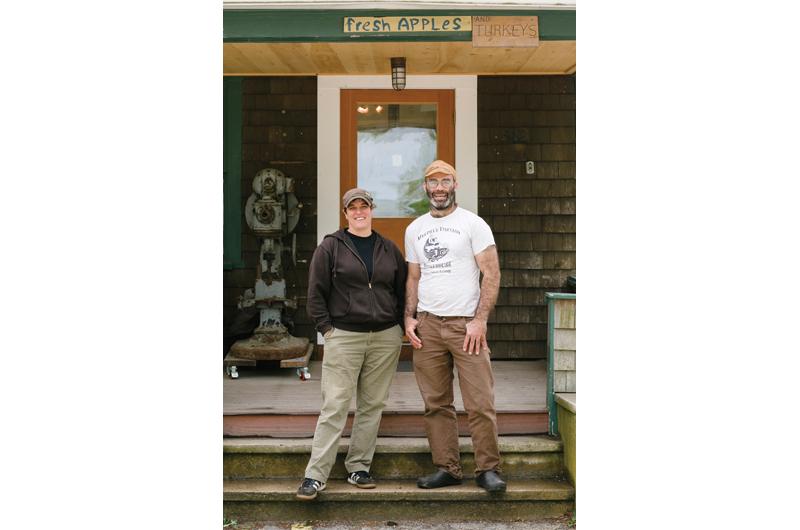
Both Munroe and Barrick knew there was a need on the Island for access to a certified commercial kitchen. Munroe had been involved in Island Grown Initiative’s conversation a few years ago about the possibility of building a community kitchen and packing facility in conjunction with an Island slaughterhouse. (That project did not go forward.) And Barrick had more requests than she could meet from young entrepreneurs wanting to rent her kitchen space at night.
To operate most prepared-food businesses on the Island (and in many places), you need two things: a food safety (ServSafe) certificate and a commercial kitchen. The ServSafe certification process is relatively easy; there are food safety classes and exams on the Island as well as on the Cape. But the kitchen is another story. It must be either a commercial kitchen space or a kitchen that has specific commercial attributes – such as stainless steel surfaces – that isn’t also used as a home kitchen. Building a kitchen is prohibitive for most food start-ups, and finding a commercial kitchen that’s available to rent by the hour can be hard.
In short, the lack of kitchen space can be the end of a great idea. This same need off-Island and across the country has spawned innovative “incubator” centers to help food
entrepreneurs get started and succeed. Hope and Main in Warren, Rhode Island, and CommonWealth Kitchen in Boston are two in our region that offer not only certified commercial kitchen spaces, but also classes and coaching on everything from business plans to recipes.
Not that both founders didn’t also have their own goals for the commercial kitchen. Barrick was looking for extra space to stage her ever-increasing roster of catering jobs and to do more preserving, now that the little farm at the Bakehouse is producing hundreds of pounds of vegetables a year. Munroe wanted a place that he could not only butcher his pigs, chickens, ducks, and turkeys (he now raises close to 5,000 birds a year), but also turn them into stock, confit, pâté, and other charcuterie.
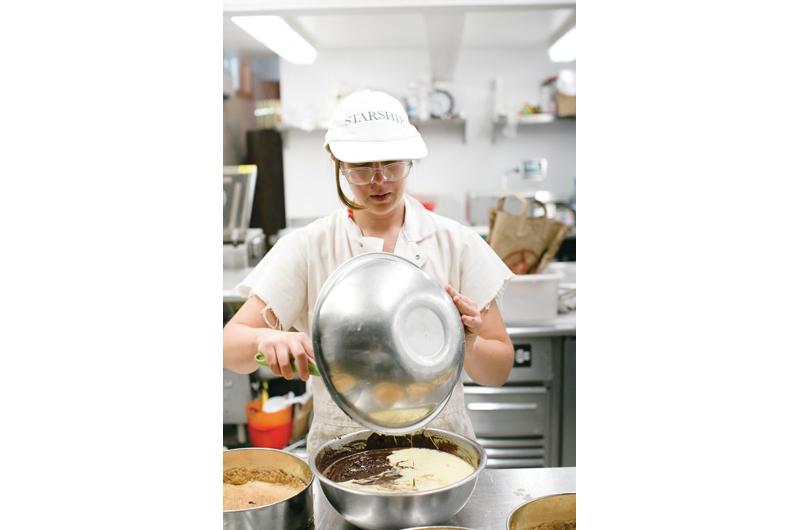
They looked at space at the airport; they checked out empty restaurants. Nothing seemed quite right. Until 342 State Road in Vineyard Haven, the former home of Elio Silva’s Tisbury Farm Market, came up for sale. “Here’s this wonderful, beautiful, one-hundred-year-old building that’s available,” Munroe remembered.
Barrick could not stop thinking and talking about it. “Jefferson finally said what any good friend would, ‘Let’s just go look at it,’” she said. “And we get in there, and I’m like, ‘We can do this, and we can do that.’”
“We both pretty much fell in love with it,” Munroe echoed.
Not everyone they talked to saw what they did. “People said we should have just put a match to it, and probably we should have, but we wanted to preserve it. It’s the sustainable thing…reduce, reuse,” said Barrick. “It’s here. Yes, we put money into it; we put a lot of work into it. And we still have work to do. But I don’t know, we saved this old building, which is part of the charm of the Island.”
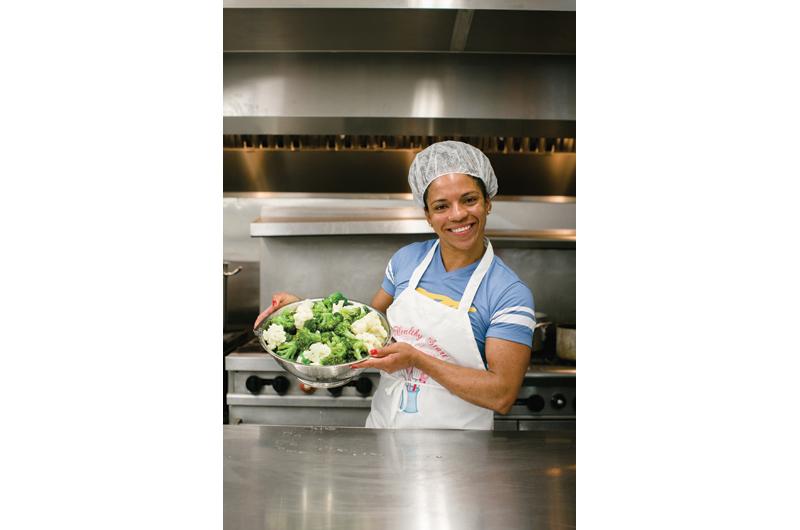
In addition to its central location and its innate charm with a big front porch and Brooklyn-esque wide front stoop, what attracted them to the building is the room it allows for different uses. The first floor has a small retail space in the front, with the larger space to the rear devoted to the commercial kitchen. Upstairs is an apartment, currently rented to one of Barrick’s year-round employees. Outside, the back offers a big enough area for pop-up dinners and other outdoor events.
“We designed the kitchen with different zones so that three or four people could work independently in the space at the same time,” Munroe noted. The line (including two six-burner stoves) is against the back wall by necessity, but the rest of the work tables are on wheels so that they can reconfigure the kitchen as necessary.
Both Pattison and Sheldon are what you would call Larder regulars. Pattison started her business baking bread at night in the Bakehouse kitchen, and while she still uses the Bakehouse ovens for bread, she’s made regular use of The Larder kitchen to bake pies, galettes, cakes, and to make her signature all-local sandwiches. The sandwiches are hugely popular at the Saturday West Tisbury Farmers’ Market, but they pop up at The Larder quite frequently too, often featuring one of Munroe’s smoked or roasted or cured meats. If you live on the Island, you’d be pretty crazy not to follow The Larder Instagram feed (@thelardermv), where enticing photos of the daily sandwich specials are posted in the morning.
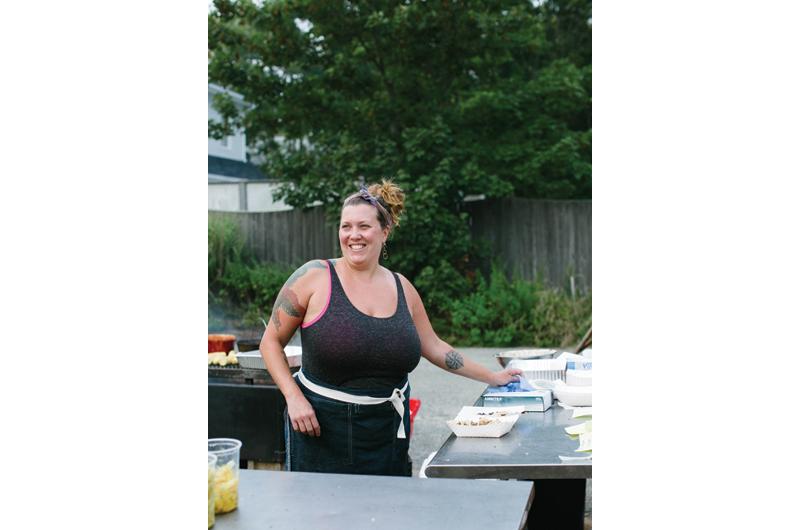
Pattison is grateful for daytime kitchen space, but even more appreciative of the relaxed atmosphere of The Larder. “There’s just a nice energy here. Jefferson is so great.”
Sheldon also mentioned the community feel. “It’s a place for all of us to gather and bounce ideas off of each other,” she said. And sometimes to cook together as well. Her taco nights proved very popular and fellow cooks helped her pull them off: Laursen’s equipment provided the smoked or grilled meat and Foster helped with the cooking and serving. It’s as if the growing network of thirty-something foodies and cooks on the Island had finally found a clubhouse. And a much needed foothold.
Pop-up events are icing on the cake for The Larder. In addition to the taco nights, Barrick did an Indian pop-up in the early summer and plans to do more. Pattison is thinking about doing a donut pop-up this fall, and Laursen and Khoan are planning an Asian night.
While Barrick and Munroe weren’t particularly surprised to see the kitchen use take off, the success of the retail space has definitely blown them away – especially Barrick, who didn’t, in her initial business plan, see it as much of an asset to the bottom line.
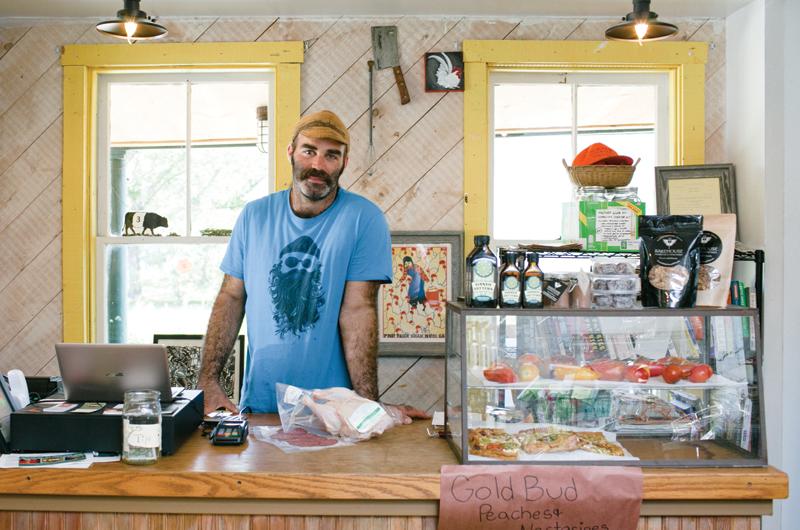
“I was so in the numbers about the kitchen rental and the rental upstairs and how I was going to make that all work that I didn’t put the retail numbers into the plan,” she said. “But this retail opportunity has been so excellent.” She sees a lot of the products she’s selling, like chimichurri, mustard, pickles, and Bakehouse farm veggies, as “complements to Jefferson’s stuff. I really want to support him.”
Munroe, for his part, started with somewhat higher expectations. “I always knew it was going to be a really big piece for me, because up until now, my biggest retail opportunity has been six hours every week at the farmers’ market. But at first I was thinking of it more as a farm stand. It has turned out to be much more.” For one thing, it’s a great showcase for the culinary talent of this farmer. Walk in The Larder any day and you’re likely to smell a pork shoulder smoking or see a bone broth bubbling. Munroe crafts a delicious range of charcuterie, from chicken liver mousse to turkey rillettes, and he can now offer his popular chicken both cooked and raw. He also sells and cooks with meat from other Island farms. (Look out for the pastrami.)
The retail section of The Larder has also gotten a boost from the seasoned advice of former Fiddlehead Farm owner Robert Skydell. He’s suggested the addition of cheeses, ripe fruit, and other gourmet items.
Perhaps the best way to illustrate the variety of The Larder’s offerings is a quick rundown (in no particular order) of just some of the items available in the retail cases one recent day: chicken feet, artisan cheese (including imported mozzarella and Parmigiano, as well as regional aged and fresh cheese), Anaheim and cherry peppers, globe eggplants, fresh garlic, specialty sodas, imported extra-virgin olive oils, vinegars, lemons, sea salt, three different kinds of Cinnamon Starship bread, Island eggs, kimchi, fresh pasta, raw whole chickens and chicken parts, cooked chicken, yogurt, pork, bacon, Ortiz tuna, quince paste, dried apricots, maple syrup, Chilmark Coffee, chicken stock, bone broth, chicken liver mousse, chimichurri, Bakehouse Farm ketchup, kombucha, water, olives, crackers, chutney, and cherry tomatoes.
Add to that a pulled pork sandwich, an egg salad toastie, tacos on the way, and soup in the making, and you understand why there always seems to be random people hanging out on the front porch or in the store when you show up. They don’t want to leave.

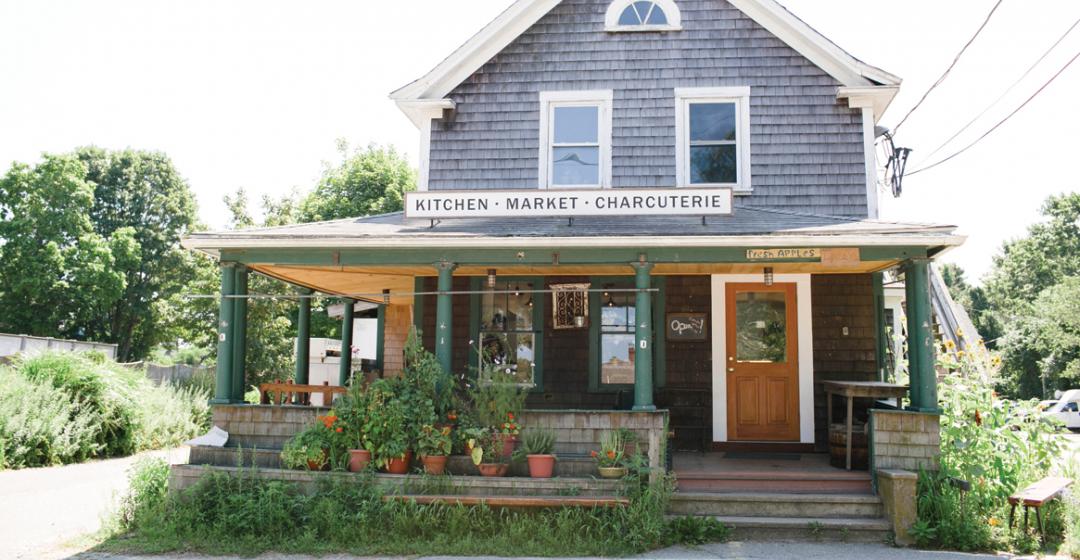


 1 comment
1 comment


Comments (1)